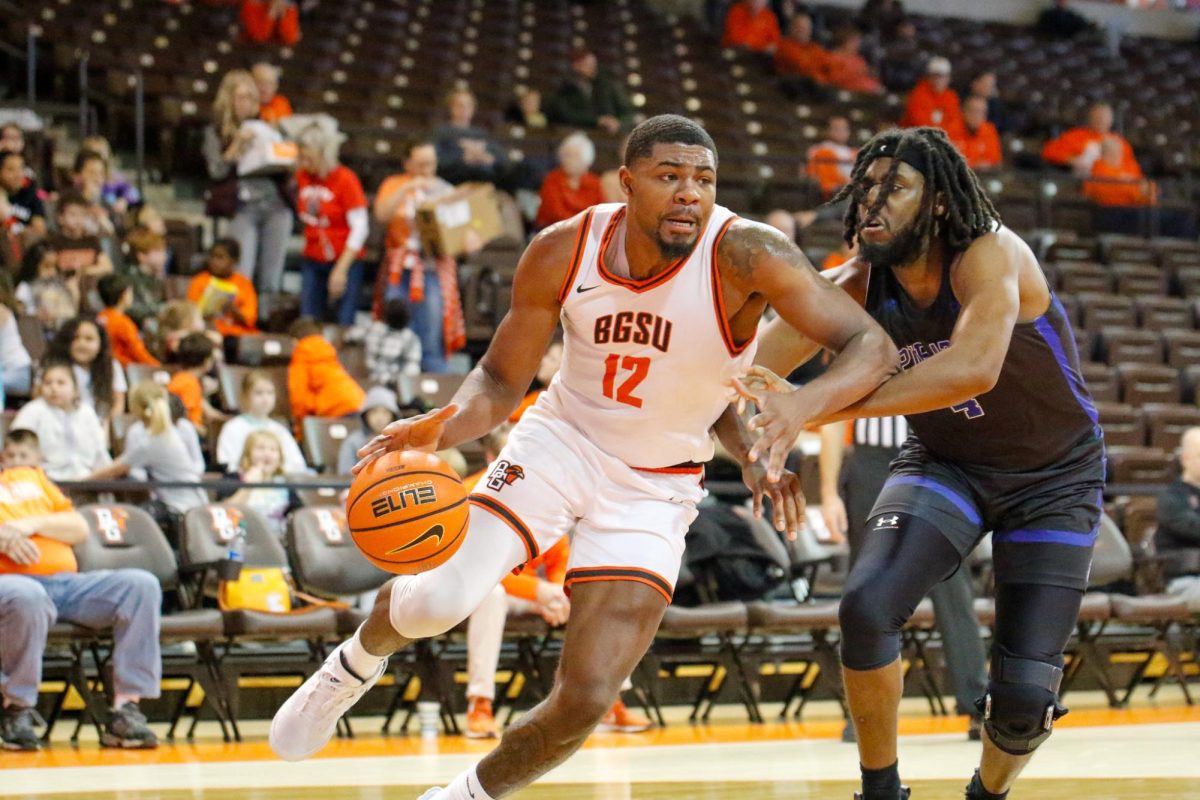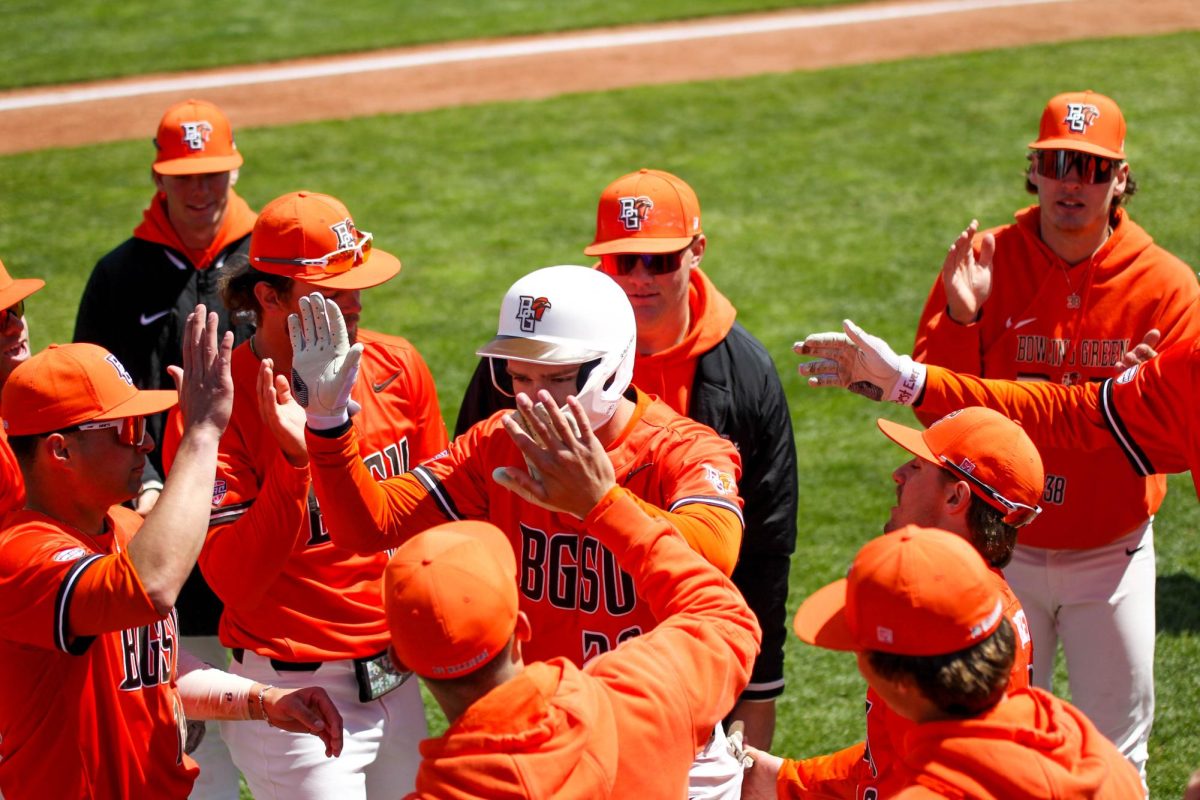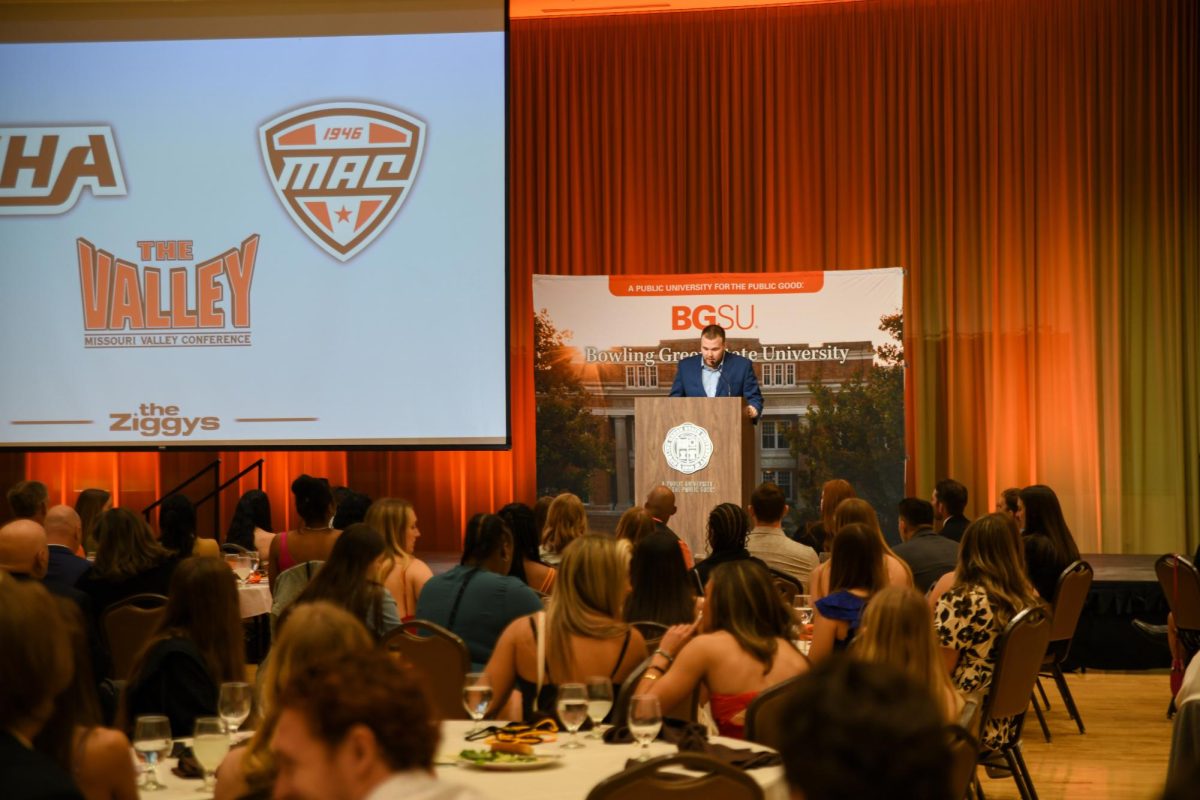Will my child be safe?
It’s a question that crosses every parent’s mind when looking at universities with a soon-to-be college student.
While reports show the University has a higher crime rate than three other Mid-American Conference schools with comparable enrollments, those reports may be deceiving due to the lack of context and inconsistent reporting.
In 2004, the most recent security report, there were 609 crime reports filed by BGSU’s campus police.
In that same year, Miami University (Ohio) recorded 376 reports, Kent State University recorded 249 and the University of Toledo recorded 149.
Steven Lab, director of the Criminal Justice department at the University, said comparing the numbers is “like apples and oranges.”
“Those numbers reflect the activities of the police departments more than the actual crime levels,” Lab said.
The crime levels could depend on each police department’s emphasis, such as one department cracking down on drug use while another concentrates on vandalism, Lab said.
The reports, which all universities must fill out according to the Jeanne Cleary Act of 1998, break down each type of crime reported.
The University’s report shows two-thirds of its crime in 2004 were liquor law violations, which make up about half of KSU’s and MU’s crime and roughly 17 percent of UT’s crime.
The reports may also differ due to location, Lab said.
“We live in a small town, while the University of Toledo is located in a metropolitan area of about 400,000 people,” he said. “The logic says that UT has more crime.”
UT has 460 fewer crimes than BGSU because much of the crime on UT’s campus is probably handled by the city of Toledo’s police departments, Lab said.
Jim Wiegand, Chief of campus police at BGSU, said crime activity on campus is “not very great.”
“Do we have crime on campus? Yes,” Wiegand said. “We’re still a 20,000 student campus, plus we’ve got 3,000 faculty and staff. We’re like a small city unto itself and on any given day, crime is going to happen.”
But the University has very few felonies, Wiegand said.
The reports show about 15 percent of the University’s crime reports were felonies, while felonies made up 61 percent of UT’s crime, 24 percent of MU’s crime and 8 percent of KSU’s crime.
Handling BGSU’s crime
The University has a number of methods to combat crime and potential crime on campus.
Despite having the smallest police force among the four MAC schools The BG News investigated – BGSU has 24 officers, MU has 25, UT has 30 and KSU has 32 – Wiegand said he has an “excellent” staff.
“I can have 100 officers on campus and there will still be crime,” he said.
The University’s campus security Web site lists a number of security features, including an escort service, shuttle buses, outdoor lighting, an on-campus 911 system, outdoor emergency phones, 24-hour University police patrols and the personal entry device system, better known as PED.
Additionally, Wiegand said staff members monitor parking lot cameras from 8 p.m. to 5 a.m.
Besides spotting people who need assistance, he said the camera staff frequently sees suspicious activity such as theft, damage to cars and violations of alcohol and drug laws.
Campus police also maintain crime prevention programs, in which officers inform students how to keep themselves and their property safe, Wiegand said.
“We work hard with the students,” he said.
An attitude that wants to keep students safe is the most important feature of campus police, according to Catherine Bath, executive director of Security on Campus, Inc., a non-profit group that works to improve university safety across the nation.
Yet after being told the list of campus security features listed on the University Web site, Bath said BGSU’s security is average.
“Those are all good things, except I think blue light phones are fairly useless, because you have to already be close to one or witness someone in trouble and go to a phone,” she said.
And though keycard systems like BGSU’s PED system are good, she said they’re standard among universities across the nation.
“There’s still a big problem with piggybacking,” Bath said, referring to students letting other people through PED-locked doors. “Once a stranger gets into the dorm and there’s access to unlocked rooms, that’s where the real problem is.”
One security innovation SOC members are excited about is a program to turn students’ cell phones into personal alarm devices, Bath said.
“You could reach into your purse or your pocket and, without looking at your phone, dial a three-digit code to summon the police,” she said. “We now have proof that Mary Jane was calling for help at 2:11 a.m.”
The program, called “Rave Guardian” was developed by Rave Wireless for Sprint cell phones and is being tested at Montclair State University in New Jersey.
According to Rave Wireless’ Web site, Rave Guardian immediately notifies campus security of an incident’s location and a description of the student who activated it.
Another program Bath said SOC sponsors is a peer education program.
“We’re having trained peer educators go into high schools and teach seniors [about alcohol safety],” she said.
Usually, a club or faculty member on campus takes charge of the program, putting on 45-minute presentations for high schools within about a half-hour’s driving distance of the University, she said.
“I think it’s effective,” Bath said. “The high-schoolers really like [it].”


















